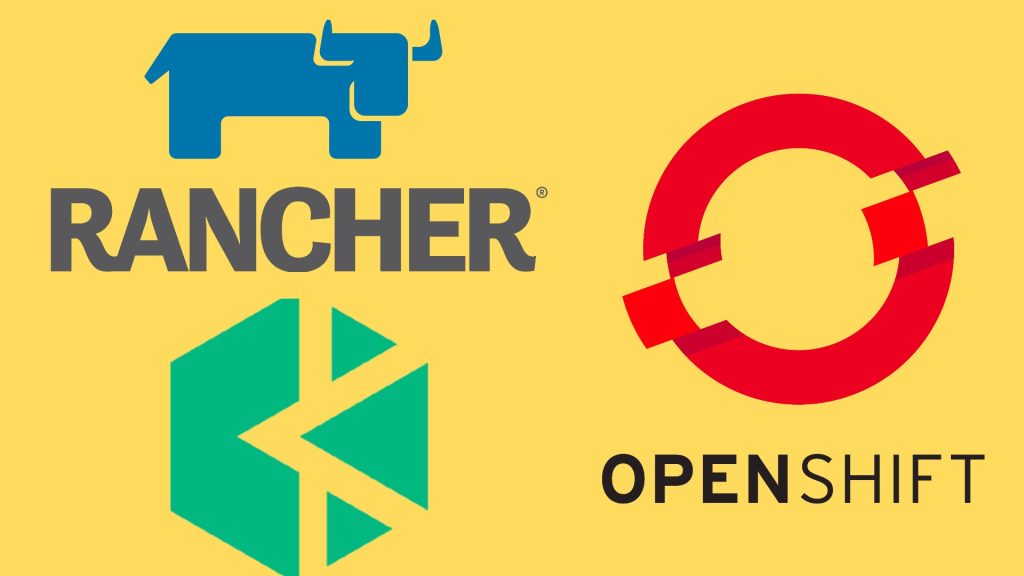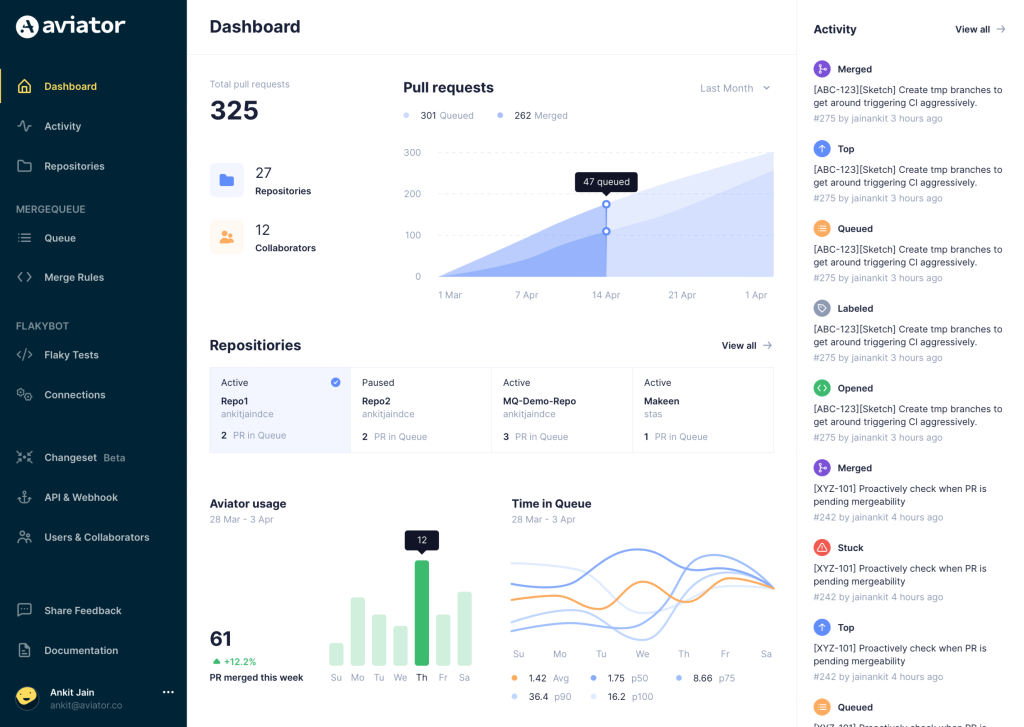Kubesphere vs Rancher and Openshift

As Kubernetes continues to be the go-to orchestration platform for containerized applications, managing and optimizing its deployment becomes crucial. This is where Kubernetes management tools come into play, offering enhanced features and user-friendly interfaces. This article will explore three prominent players: KubeSphere, Rancher, and OpenShift.
We will also look at a table to help you compare Kubernetes tools like KubeSphere, Rancher, and OpenShift based on different criteria. Keep in mind that specific requirements may vary based on individual use cases.

KubeSphere: Unifying Kubernetes and cloud-native Ecosystems
Kubesphere is an open-source, enterprise-grade container management platform designed to simplify Kubernetes operations. It stands out for its integrated approach, bringing together Kubernetes, DevOps, and microservices into a cohesive ecosystem.
At its core, KubeSphere embraces a microservices architecture. It consists of various components such as the KubeSphere Kernel, KubeSphere Console, and KubeSphere DevOps System. The Kernel manages the underlying Kubernetes clusters, while the Console provides a centralized dashboard for monitoring and management. KubeSphere’s architecture emphasizes extensibility, making it a flexible choice for diverse use cases.
Rancher: Orchestrating Kubernetes anywhere
Rancher is a versatile, open-source container management platform that simplifies the deployment and operation of Kubernetes across various environments and let’s you deliver Kubernetes as a service. It empowers users to manage clusters seamlessly, whether on-premises, in the cloud, or at the edge.
Rancher’s architecture is built around a modular design. It consists of the Rancher Server, which serves as the control plane, and Rancher Agents, which are deployed on each managed cluster. The Server-Agent architecture ensures scalability and flexibility, enabling Rancher to support multiple Kubernetes clusters. Rancher excels in its ability to manage clusters regardless of their location, making it an ideal choice for organizations with diverse infrastructure requirements.
OpenShift: Enterprise-grade Kubernetes by Red Hat
OpenShift, developed by Red Hat, is a Kubernetes-based container platform designed for enterprise applications. It provides a comprehensive set of tools for building, deploying, and managing containerized applications at scale.
OpenShift’s architecture revolves around the Kubernetes core but extends it with additional components for enhanced security, developer productivity, and application lifecycle management. It includes the OpenShift Control Plane, Node components, and additional features like Source-to-Image (S2I) for streamlined application development. OpenShift emphasizes a secure and scalable container orchestration environment, making it a preferred choice for enterprises with stringent requirements.
Comparing KubeSphere, Rancher, and OpenShift
Ease of Use:
- KubeSphere: Known for its user-friendly interface, KubeSphere offers a straightforward setup and management process. Its integrated approach simplifies Kubernetes operations for both beginners and experienced users.
- Rancher: Rancher provides a clean and intuitive user interface that streamlines cluster management. Its modular design allows for ease of installation and configuration, making it accessible for users of varying expertise levels.
- OpenShift: OpenShift, while powerful, may have a steeper learning curve compared to the other two. However, its rich feature set compensates for this complexity, providing robust capabilities for enterprise users.
Architecture:
- KubeSphere: Utilizes a microservices architecture, promoting flexibility and extensibility. The KubeSphere system architecture is a well-orchestrated framework that encompasses a user-friendly front end, robust observability features, a flexible and scalable back-end API, and seamless integration with Kubernetes as the underlying infrastructure.
- Rancher: Adopts a modular architecture with a central control plane (Rancher Server) and agents on managed clusters. This design allows Rancher to operate seamlessly across different environments.
- OpenShift: Extends Kubernetes with additional components to offer a comprehensive container platform. It`s architecture is designed with a focus on enterprise-grade security and scalability.
Features and Add-ons:
- KubeSphere: Integrates DevOps tools and provides features for application lifecycle management, monitoring, and more. Its marketplace allows users to easily add and manage extensions. Kubesphere’s pluggable architecture allows for customization and extension. The App Store is a marketplace for integrating third-party applications and services, expanding the platform’s capabilities.
- Rancher: Offers a wide range of features, including multi-cluster management, centralized authentication, and support for various orchestration options. Rancher’s modular design enables easy integration with third-party tools.
- OpenShift: Stands out with its extensive feature set, including developer tools like Source-to-Image (S2I), built-in CI/CD, and advanced security features. Its focus on enterprise needs makes it suitable for complex deployments.
Scalability:
- KubeSphere: Scales well, thanks to its microservices architecture. It supports the growth of clusters and applications as demands increase.
- Rancher: Built with scalability in mind, Rancher’s modular design allows it to handle developing infrastructure requirements.
- OpenShift: OpenShift can efficiently manage large-scale deployments and complex enterprise applications.
Community Support:
- KubeSphere: Has an active open-source community providing support and contributions. The community actively participates in forums, discussions, and issue tracking.
- Rancher: Benefits from a strong community that contributes to ongoing development. The community actively engages in discussions and provides assistance on forums.
- OpenShift: Supported by the extensive Red Hat community, providing a wealth of resources, documentation, and expertise. The backing of Red Hat ensures robust support for enterprise users.
Cost:
- KubeSphere: Being open source, KubeSphere is cost-effective for many organizations. However, consider potential costs associated with specific features or support needs.
- Rancher: Open-source Rancher is cost-effective, but there may be associated costs for additional features or support in the enterprise version.
- OpenShift: As an enterprise solution, OpenShift may have associated licensing costs. It provides value through its feature-rich platform and comprehensive support.
Here’s a table with some common criteria and a subjective rating from 1 to 5 (1 being the lowest and 5 being the highest) of how well each tool does. Keep in mind that specific requirements may vary based on individual use cases, so it’s essential to tailor the evaluation to your specific needs
| Criteria | KubeSphere | Rancher | OpenShift |
|---|---|---|---|
| Ease of Installation | 4 | 5 | 3 |
| User Interface | 4 | 5 | 5 |
| Features and Add-ons | 3 | 4 | 5 |
| Community Support | 3 | 4 | 5 |
| Documentation | 3 | 4 | 5 |
| Scalability | 4 | 5 | 5 |
| Integration Options | 3 | 4 | 5 |
| Security Features | 3 | 4 | 5 |
| Updates and Maintenance | 3 | 4 | 5 |
Conclusion
Choosing the right Kubernetes management tool depends on your organization’s specific needs and preferences. KubeSphere, Rancher, and OpenShift each bring unique features to the table, catering to a diverse range of use cases. Whether you prioritize integration, versatility, or enterprise-grade security, exploring these tools in-depth will undoubtedly help you make an informed decision for your container orchestration journey.
Aviator: Automate your cumbersome processes

Aviator automates tedious developer workflows by managing git Pull Requests (PRs) and continuous integration test (CI) runs to help your team avoid broken builds, streamline cumbersome merge processes, manage cross-PR dependencies, and handle flaky tests while maintaining their security compliance.
There are 4 key components to Aviator:
- MergeQueue – an automated queue that manages the merging workflow for your GitHub repository to help protect important branches from broken builds. The Aviator bot uses GitHub Labels to identify Pull Requests (PRs) that are ready to be merged, validates CI checks, processes semantic conflicts, and merges the PRs automatically.
- ChangeSets – workflows to synchronize validating and merging multiple PRs within the same repository or multiple repositories. Useful when your team often sees groups of related PRs that need to be merged together, or otherwise treated as a single broader unit of change.
- TestDeck – a tool to automatically detect, take action on, and process results from flaky tests in your CI infrastructure.
- Stacked PRs CLI – a command line tool that helps developers manage cross-PR dependencies. This tool also automates syncing and merging of stacked PRs. Useful when your team wants to promote a culture of smaller, incremental PRs instead of large changes, or when your workflows involve keeping multiple, dependent PRs in sync.




